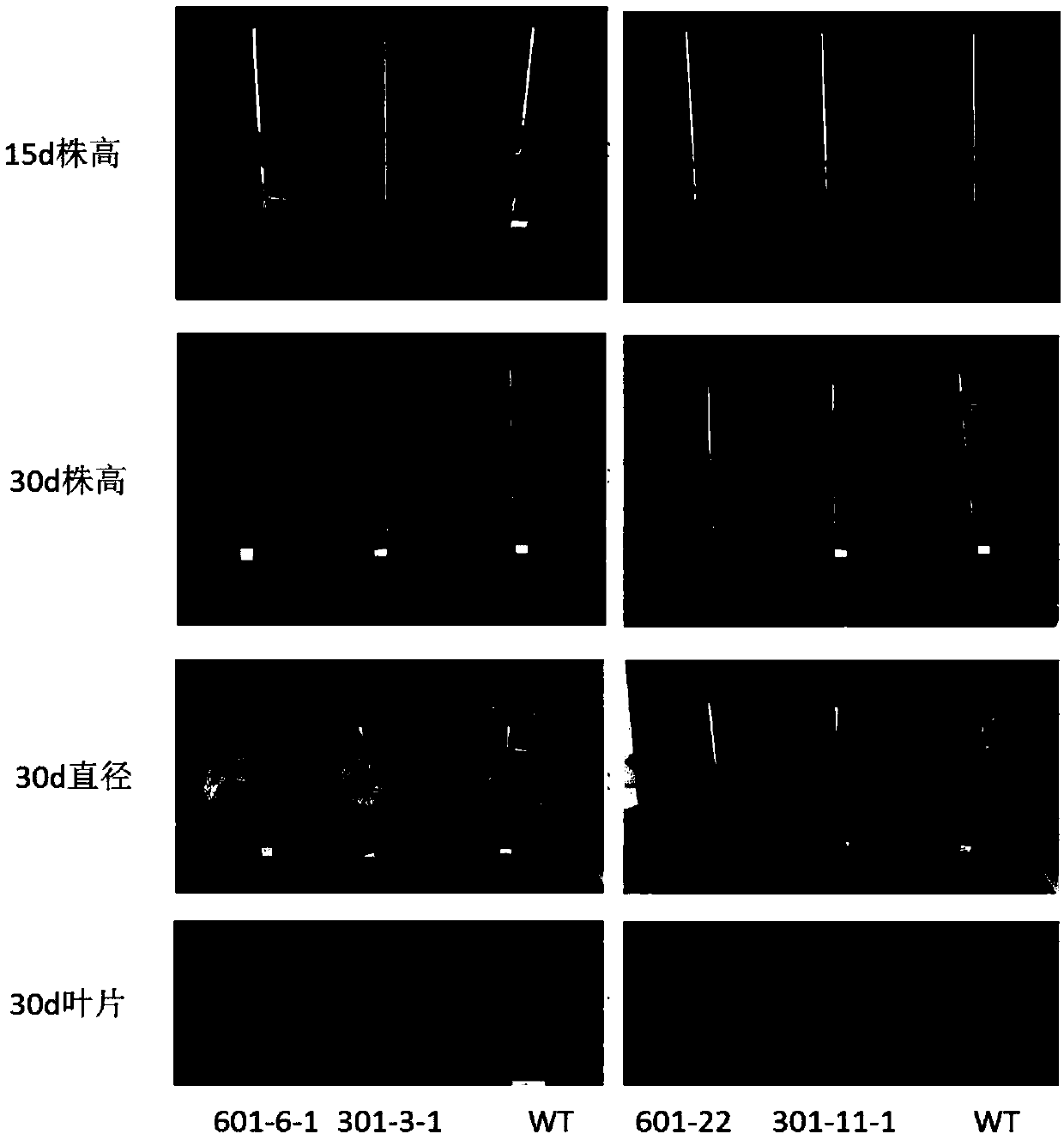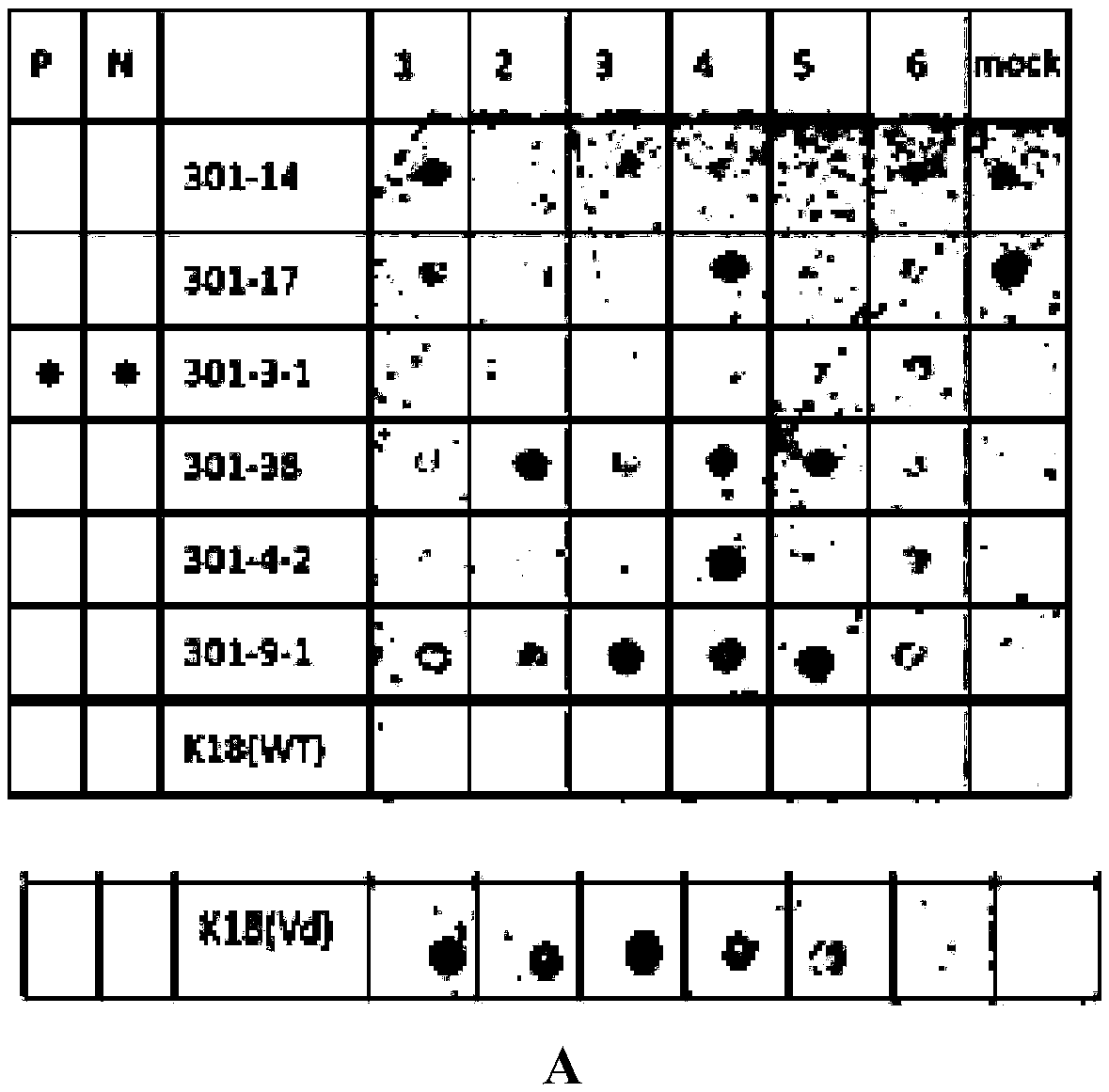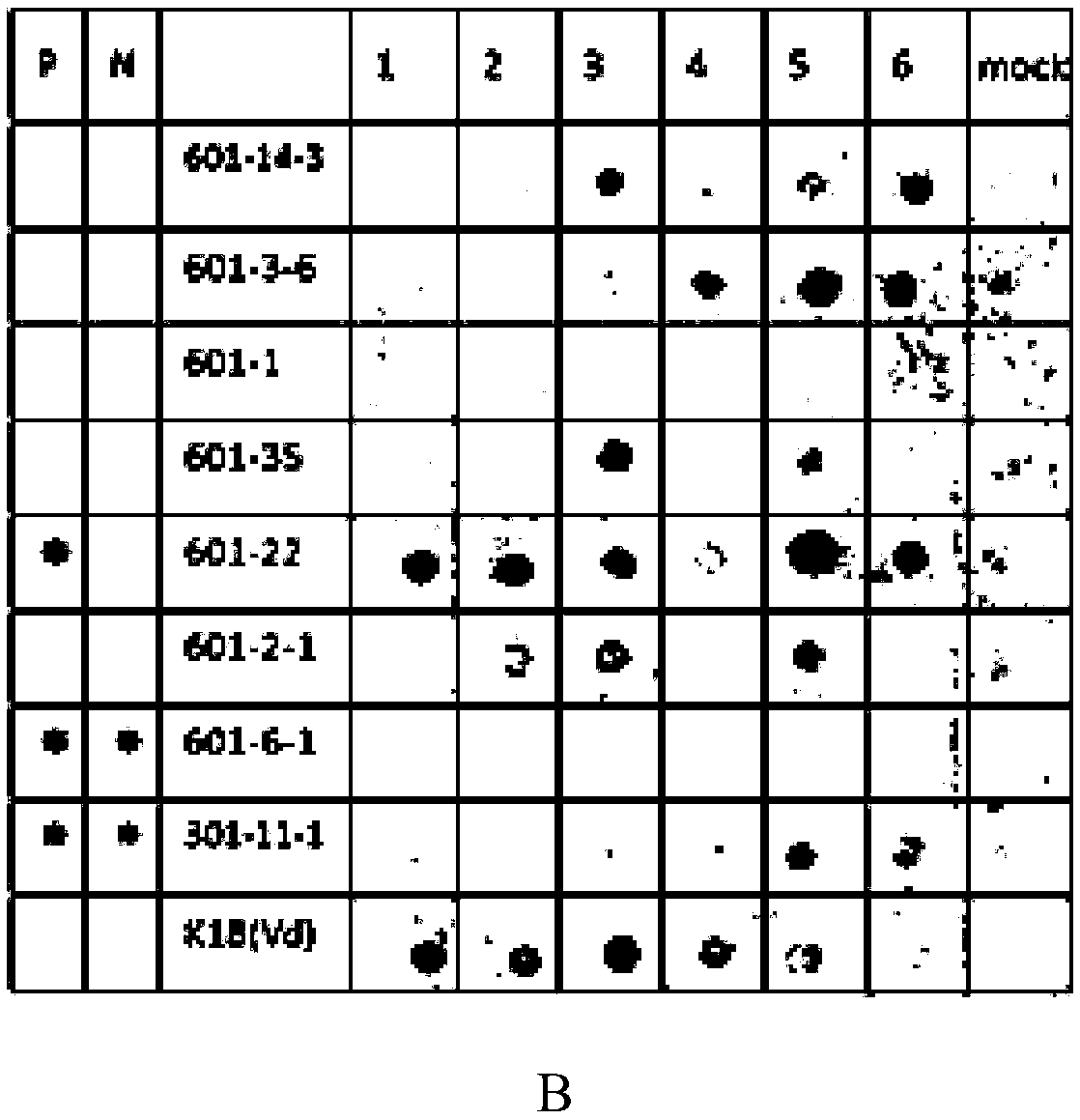amiRNA capable of improving PSTVd resistance of potatoes and application thereof
A potato and resistance technology, applied in the direction of DNA / RNA fragments, application, recombinant DNA technology, etc., can solve the problems of limited use of silent disease resistance mechanisms, no better way, no reports of viroids and major viral diseases, etc. , to achieve the effect of promoting the development of research
- Summary
- Abstract
- Description
- Claims
- Application Information
AI Technical Summary
Problems solved by technology
Method used
Image
Examples
Embodiment 1
[0027] Embodiment 1, the acquisition of potato brp gene sequence
[0028] Genomic DNA of potato variety Kexin 18 was used as a template for PCR amplification. The upstream primer was: 5'-atggcatccgccgtcttagctag-3' (SEQ ID NO.1), and the downstream primer was: 5'-ctcaagagtgtgcatcatcagc-3' (SEQ ID NO.2), the amplification conditions are pre-denaturation at 94°C for 4 minutes; denaturation at 94°C for 60 seconds, annealing at 55°C for 30 seconds, extension at 72°C for 90 seconds, a total of 30 cycles; final extension at 72°C for 10 minutes, and storage at 4°C. The sequence shown in SEQ ID NO.3 was obtained.
Embodiment 2
[0029] Embodiment 2, the acquisition of target potato brp gene amiRNA sequence
[0030] Through gene sequencing and sequence structure analysis, a 21nt gene sequence was selected downstream of the 3' end of the nuclear localization signal, and the sequence was synthesized to obtain the amiRNA sequence targeting the potato brp gene, 5'-gtctcttacaaacaaggcgag-3' (SEQID NO.4) , and 5'-gcaaagctgatagagcataaa-3' (SEQ ID NO.5) was used as a control.
Embodiment 3
[0031] Embodiment 3, construction contains the recombinant vector and the engineered bacterium of the pre-amiRNA targeting potato Brp gene
[0032] A. Acquisition of pre-amiRNA gene sequence
[0033] PCR amplification was performed using ath-pre-miRNA159 as a template, and the primers contained the sequence shown in SEQ ID NO.4.
[0034] The upstream primer is: 5'- Actagt tgacgatggaaggtctcttacaaacaaggcgagatgagttgagcagggta-3' (SEQ ID NO.6), the underline is the XbaⅠ restriction site, and the boldface is the amiRNA sequence targeting the potato brp gene;
[0035] The downstream primer is: 5'- gagctc atggtctcttacaacaaaggcgaggaagagtaaaagcca-3' (SEQ ID NO.7), the underline is the SacⅠ restriction site;
[0036] The amplification conditions were pre-denaturation at 98°C for 4 minutes; denaturation at 98°C for 60 seconds, annealing at 55°C for 30 seconds, and extension at 72°C for 60 seconds, a total of 30 cycles; the final extension at 72°C for 10 minutes, and storage at 4°C to...
PUM
 Login to View More
Login to View More Abstract
Description
Claims
Application Information
 Login to View More
Login to View More - R&D
- Intellectual Property
- Life Sciences
- Materials
- Tech Scout
- Unparalleled Data Quality
- Higher Quality Content
- 60% Fewer Hallucinations
Browse by: Latest US Patents, China's latest patents, Technical Efficacy Thesaurus, Application Domain, Technology Topic, Popular Technical Reports.
© 2025 PatSnap. All rights reserved.Legal|Privacy policy|Modern Slavery Act Transparency Statement|Sitemap|About US| Contact US: help@patsnap.com



